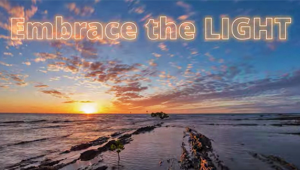Interpretation & Black & White: Exploring The Potential, Using The Tools
Every time you make an exposure decision, and particularly when you make processing choices, you are interpreting the moment you snapped the shutter. That may have to do with the way light plays, your point of view or using an infrared converted camera to record the tropical foliage (#1).

All Photos © George Schaub
Consider a tree on the edge of a cliff overlooking a churning sea. The tree’s leaves have been stripped by the relentless wind; its branches seem to echo the energy of the forces around it. You have before you an objective scene—the tree, rocks and surf—but you also have the power to enhance the mood in any fashion you desire. Through exposure, processing and printing choices you can make the tree stand out in contrast with its surroundings, thus accentuating its presence and power, or have it enveloped within its environment by creating a deep, moody blend throughout the entire scene.
Exposure, and particularly processing, was used to highlight and obscure certain areas of this scene of a reflective pond (#2). The subject turned from a pond in a forest to an abstract consideration of light and shadow. Note the texture in the pond surface versus the very dark tones of the upper shore. The lightest part of the frame is in the center. This is not meant as an objective “record” of this pond but a consideration of the tonal and textural possibilities it afforded.

This ability to influence the final image is one of the powers granted to all photographers. Subjects can be manipulated by camera settings, exposure, processing and printing choices; thus the visual essence as defined by the photographer can be distilled through technique. The final image becomes a remembrance of the objective scene as interpreted through the artistic eye of the individual photographer. Indeed, most effective and expressive black and white images are re-interpretations that result from the photographer’s exploration of the visual possibilities. The aim for both photographer and viewer is a deeper consciousness of light, form and visual meaning.
The interpretation you choose based on exposure and processing might have to do with formalities such as tonal play, or your use of deep shadow and open light for graphic appeal, or your choosing an interplay of tones to create an emotional and physical sense of place. Any detail on the deep tones here was obscured via processing to emphasize the “negative space” they bring to the composition and the way they emphasize the texture and forms in the lighter tones (#3).

The process is that of combining technical know-how with artistic intuition, one that often demands going a step beyond what was first glimpsed when the shutter was released. At first, the challenge might be recreating the quality of light that appeared in the original scene. This comes from understanding how light records, and ways in which proper exposure techniques yield a faithful rendition of the scene. But you should also explore ways in which the moment can be transformed, and the vision enhanced.
The ability to alter and change tonal and contrast relationships opens many image options. When I photographed this cathedral ceiling (#4) I did so to record the interplay of arches and vaults. When I processed it later I saw the intricacy of the design and abstracted it to a play of line and shadow. Does the interpretation change what I saw when I snapped the shutter? Perhaps it gets to its essence.

This process can be roughly described as informed seeing, pre-visualizing what the image will look like after post-processing, understanding the potential of the image, and then applying techniques to make it all happen. Photography is truly a blend of art and science; the science serves the art, while the art can only be truly realized through an application of the science. Happily, much of the science is made easy with modern cameras, metering systems and the ultimately malleable medium—digital imaging. But these can only take you so far. It is in the exploration of the art where the real experience takes place, where your expression of the world is made manifest.
Not every black and white shot becomes manipulated in emotional or abstract ways. Yet, even a more documentary shot like this (#5) can be interpreted and changed to bring forth every tone and nuance and enhance the exposure and the scene. Here, all the colors in the fence and surrounding areas, and even the sky, is manipulated by working with processing conversion of color to grayscale tone (#6). I could have made the blue in the fence, for example, lighter or darker—here I decided to darken that hue and lighten the pink and green.


The idea is to combine a consideration of the aesthetics of the unique monochrome medium—tonality, contrast and texture—with the tools of the craft and their applications to make effective images.
- Log in or register to post comments












































